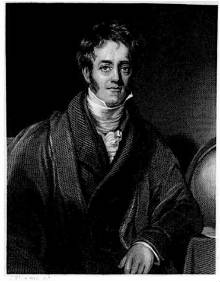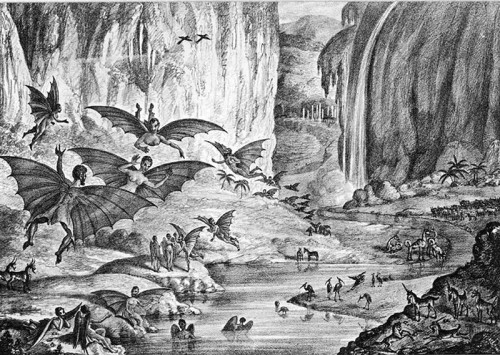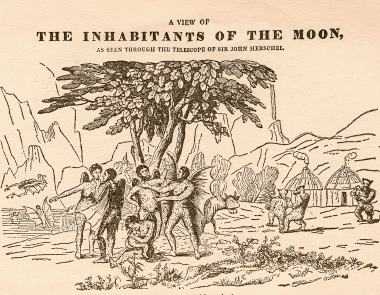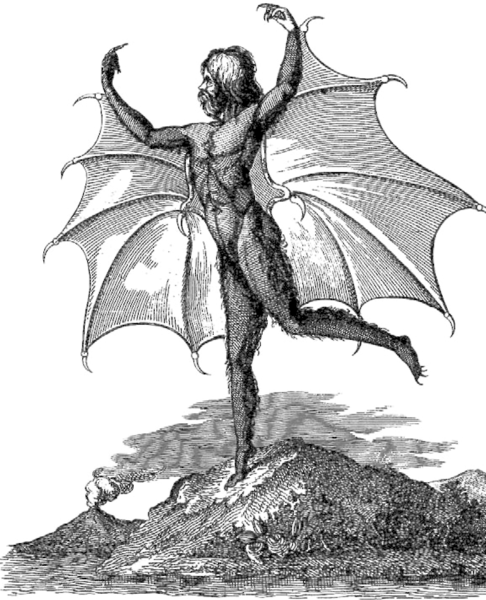
The following is an article from Uncle John's Endlessly Engrossing Bathroom Reader.
No, not the one about the Hollywood studio and all that -the other one.
A WALK ON THE MOON
On August 25, 1835, the first of a series of front-page article was published in the Sun, a two-year-old newspaper in New York City. The subject was Sir John Frederick William Herschel, one of the most respected scientists of his day, especially in the field of astronomy. He'd already identified and named seven moons of Saturn and four of Uranus, and had received numerous awards for his work, including a British knighthood. The information for the article came from the Edinburgh Journal of Science and a Dr. Andrew Grant, who had recently accompanied Dr. Herschel to South Africa, where they were mapping the skies of the Southern Hemisphere. To do the job properly, Herschel had built a massive telescope -the lens was 24 feet in diameter- that operated "on an entirely new principle." It was all very scientific and complicated.
The first article didn't reveal much, but over the next six days readers received some amazing news. In the course of his investigations with the new device, Hershel had aimed his new telescope at the moon. The scope was so powerful that looking through it was almost like standing on the lunar surface, enabling Herschel to make an astonishing discovery: The moon was teeming with life. And not just plants -there were animals running all over the place.
EXPERTS AGREE
Extraterrestrial life was a hot topics in the early 1800s. Telescopes were getting larger, and astronomers were discovering more and more stars, moons, planets, comets, nebulae, etc. Along with these discoveries some claims -sometimes from respected astronomers- that it was only a matter of time before life was discovered on other planets. One especially popular book at the time was Christian Philosopher, or the Connexion of Science and Philosophy with Religion, by Scottish scientist and minister Thomas Dick, first published in 1823. In it, Dock estimated (somehow) that there were roughly 21 trillion inhabitants in our solar system -4 million of whom lived on the moon!

MOON BATS
Over the six days, the Sun's readers learned even more new information about the moon. A few examples: The lunar surface is covered in forests, lakes, rivers, and seas, inhabited by spherical creatures that rolled across the beautiful beaches, blue unicorns that wander the mountains, and two-legged beavers that live in huts and use fire. But there was one even more outlandish claim: There are intelligent humanoids on the moon -about four feet tall, largely covered in hair, with faces that are "a slight improvement upon that of a large orangutan." And they have wings. They spend their time flying around, eating fruit, bathing, and talking with each other. Herschel gave them the scientific name Vespertilio-homo, or "man-bat," and said they were actually civilized.
They seemed eminently happy, and even polite, for we saw, in many instances, individuals sitting nearest these piles of fruit select the largest and brightest specimens, and throw them archwise across the circle to some opposite friend or associate who extracted the nutriment from those scattered around him, and which were frequently not a few.
The articles caused a sensation. Newspapers across America reprinted them without raising any questions (the New York Times called the information they contained "probable and possible"), and the Sun instantly became the best-selling newspaper in the country. To further cash in on the "moon fever" they had started, the Sun even reprinted the story in pamphlet form, along with sketches of the newly-discovered moon species, and sold thousands of them, too.

BACK TO EARTH
Over the next few weeks, the story spread to Europe, where it enjoyed the same success it had in America. But doubts about the story were growing, too. Eventually it got to South Africa... and to Sir John Herschel. He, of course, denied the claims immediately. And it turned out the Edinburgh Journal of Science had eased to exist years earlier and there was no such person as Dr. Andrew Grant. "The Great Moon Hoax," as it became known, was over.
The truth of the hoax's origin remains a mystery. Most accounts say the story was written by the Sun's Cambridge-educated reporter Richard Adams Locke, and that he did it as a satire to mock the gullible public and "scientists" like Thomas Dick, who made wild claims based on nothing but speculation. (Locke never publicly admitted to writing the articles, although there are some credible accounts of him later confessing to their authorship in private.)
Herschel later said he thought the hoax was hilarious... at first. But he grew annoyed at having to answer questions about the "moon people," which continued for years afterward. The Sun never issued a retraction for the story, and never admitted that it was a hoax. By 1836 the Sun had a circulation of 20,000-and was the largest newspaper in the world.

EPILOGUE
* Richard Adams Locke left the Sun in August 1836 and started his own paper, The New Era. There he published another hoax, "The Lost Manuscript of Mungo Park," the purported diaries of a famed Scottish adventurer in Africa. It failed to catch the public's imagination, as too many people knew that Locke was the author.
* Thomas Dick, who was probably overjoyed about the articles when he first heard of them, was much less happy when he found out they were hoaxes, saying that "such attempts to deceive are violations of the laws of the Creator."
* An American preacher who had heard about the story took up a collection in the hopes of sending Bibles to the man-bats on the moon. (Just how he proposed to do that is unknown.)
* In April 1844, the Sun published the story of a European aerialist named Monck Mason, who had just completed the first crossing of the Atlantic Ocean in a hot-air balloon ...in three days. The "Balloon Hoax" is the second-most famous of the Sun's hoax stories -and it was written by Edgar Allan Poe.
__________
 The article above is reprinted with permission from Uncle John's Endlessly Engrossing Bathroom Reader.
The article above is reprinted with permission from Uncle John's Endlessly Engrossing Bathroom Reader.Since 1988, the Bathroom Reader Institute had published a series of popular books containing irresistible bits of trivia and obscure yet fascinating facts.
If you like Neatorama, you'll love the Bathroom Reader Institute's books - go ahead and check 'em out!





